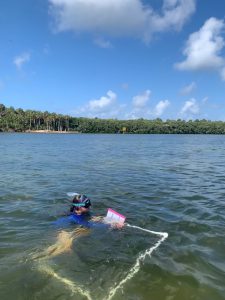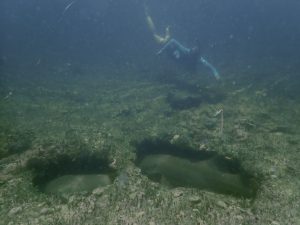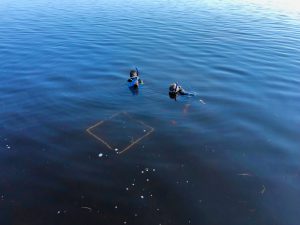Written by 2022 Summer Intern Aliyah Formont, hosted by Timothy Jones, Trisha Green, Kate Suchanec, and Catherine Puma from the BBSAP
I had the opportunity to spend my summer with the Department of Environmental Protection and the Big Bend Seagrasses Aquatic Preserve based in Crystal River, Florida. While based in Crystal River, I participated in coastal monitoring programs that extended through St. Marks River down to the Homosassa River.

The Mission
The Big Bend Seagrasses Aquatic Preserve was established in 1985. Spanning over 984,000 acres including 150 miles of coastline, this aquatic preserve is the largest in Florida. Not only is this the largest aquatic preserve in Florida, but also one of the most immaculate places in the state. The mission of the Florida Department of Environmental Protection (FDEP) is to focus on creating and maintaining partnerships in order to safeguard Florida’s natural resources and enhance ecosystems.

In the Field
A typical day was rarely ever the same. All fieldwork days required extensive planning in order to complete the required tasks within the timeline given. Some days were spent collecting water quality data through nutrient sampling. This would occur at fixed sites on a bi-monthly schedule. In addition to this program, the aquatic preserve also has a continuous water quality monitoring program. Within the continuous water quality monitoring program, the team and I were responsible for the deployment and retrieval of the YSI EXO multi-parameter data sondes. The data collected by the data sondes are in 15-minute intervals in order to expand datasets and establish baseline data to monitor trends of the water quality. In addition to the other programs, I also partook in monitoring seagrass and macroalgae at 100 fixed locations throughout the Big Bend Seagrasses Aquatic Preserve. Collecting data for this program required thorough observation of the site that recorded the presence of seagrasses, their percentage cover, the composition of sediment, and the identification and calculated amounts of various macroalgae.

Impact
Conducting this research is valuable to closely monitor the aquatic preserve and supply groups with accurate information on the current conditions. The groups using this data include resource managers, scientists, and the general public in their approach to addressing the conservation of various habitats or their independent management needs. During my internship with the Nature Coast Biological Station, I was able to develop my hard skills that involved, data processing, calibration, and decalibration techniques for various equipment, operating large vessels, and research collection in the field. In combination with my hard skills, I also gained valuable soft skills such as collaboration, communication, and problem-solving skills.

In Conclusion
My experience with the Department of Environmental Protection was crucial in my development in the water science field. I am eager to take these skills and use them for my future endeavors. I owe everything to the team at the Big Bend Seagrasses Aquatic Preserve. Timothy Jones, Trisha Green, Kate Suchanec, and Catherine Puma made this experience so rewarding. I am forever impacted by the dedication of this team to do what they do and do it well.
 8
8
